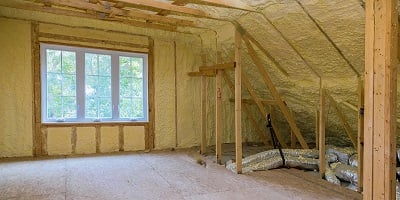Insulating a home properly is the number one way to reduce energy loss. The attic is the key to trapping warm air in a home during the winter months. Warm air rises, so without effective insulation, it will quite simply rise right out of a home. Fiberglass insulation is one of the most versatile and effective materials used to insulate attics, but insulation needs to be correctly installed to realize its full potential. A pneumatic stapler and a handy crew can mean the difference between a passable insulation job and one that will hold for years. Here are a few basic tips that can help maximize the effectiveness of insulation while minimizing the time it takes to install.
Know Your Fiberglass Insulation Types
Before you grab your pneumatic stapler and start placing insulation, you need to know what you are working with. Most modern fiberglass is available in a roll, batt, and loose-fill. Each has its own advantage. Roll insulation is easily custom-cut whereas batt insulation can be quickly installed since it comes in precut, ready-to-install fiberglass strips. On the other hand, loose-fill can fit into nooks and crannies and does not require any cutting.
Determine Your R-Values
The R-Value is the measure of how much insulation the fiberglass you are thinking of using actually offers. To get more specific, the R-Value measures how much thermal resistance the insulation in question is able to provide. In general, the higher the value the more insulation, but this also means thicker insulation. Not all homes need super thick insulation. Location of a home, its construction materials, and overall size all impact the correct R-value. The same way you wouldn't squeeze into a crawl space without the right sized FASCO® pneumatic stapler, you shouldn't begin attic insulation without the right type of fiberglass.
Properly Insulate Yourself
As the name implies, insulation is made out of glass fibers. These can irritate your lungs, skin, and eyes therefore you need to be properly dressed before grabbing your pneumatic stapler and attacking the task. It is best to wear long sleeves and long pants along with gloves, eye goggles, and a proper facemask. Essentially, the more your body is covered the more protected you will be.
Learn How to Insulate Around Obstacles
It can be tempting to insulate right over pipes and wires. There are a lot of pipes and wires in the attic, but in the long run, this will actually counteract the efforts of your insulation. Instead, when you get to an obstacle split the insulation and place half behind the obstacle and half in front. The end result should look something like a sandwich and ensure that the area is properly insulated.
Choose the Right Pneumatic Stapler
Insulation does not just magically stay in place - you must fasten it into place with a pneumatic stapler. To do this you unfold the insulation and then flatten the mounting tabs. Once in place, use an air-powered staple gun to fasten the tabs directly into studs. To ensure insulation goes smoothly, always choose FASCO® (a member of the BECK Group) staplers and BECK staples for a smooth and firm finish. The BECK Group has a full range of pneumatic staplers that include low profile models for tight spaces, perfect for those attic corners. The right fastener means you truly get the energy loss protection you need in your attic. Check out what The BECK Group has to offer right now. Click the button below.
.svg.png)


